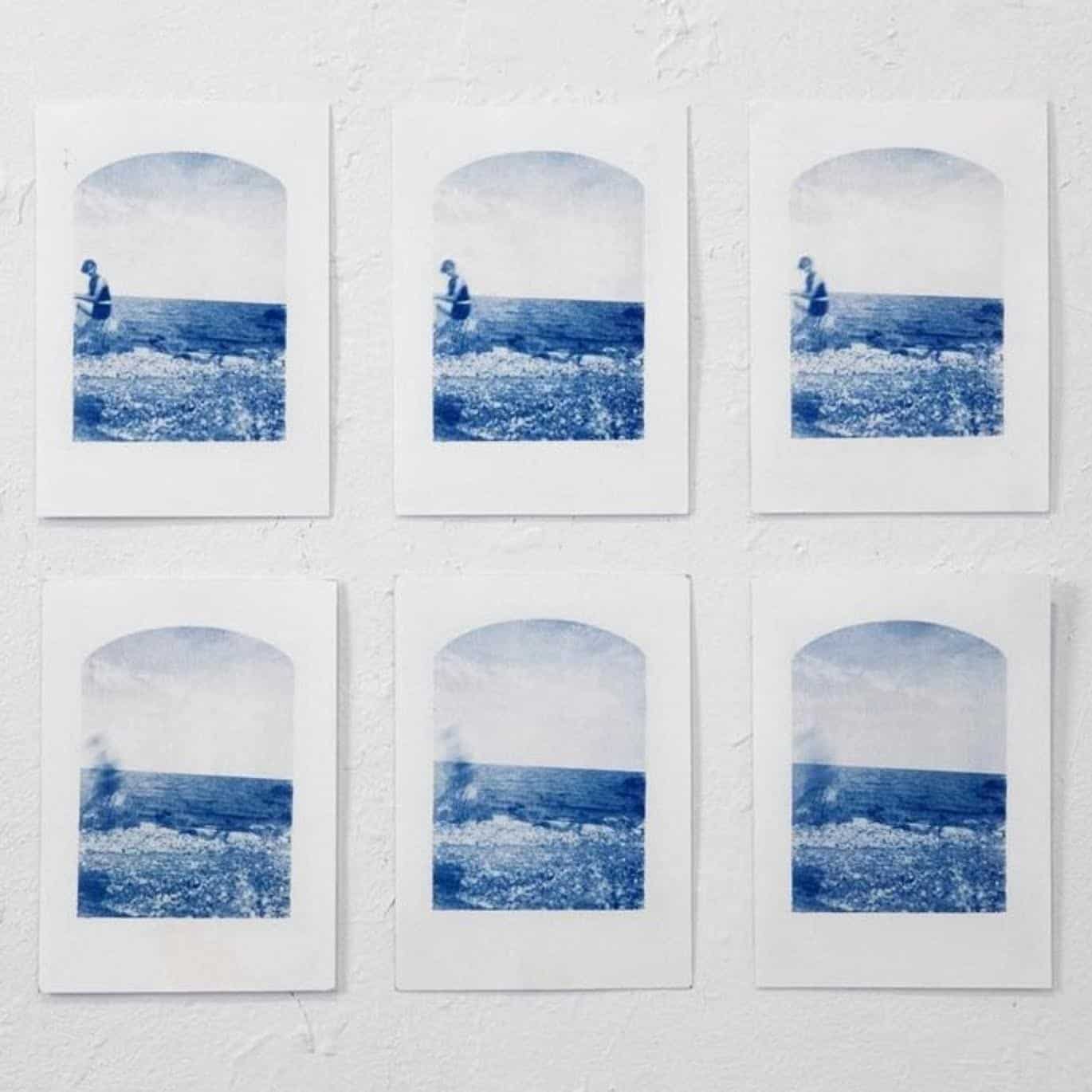For the Workman Arts’ 20th anniversary Being Scene exhibit (March 4-28), Curator Jacqueline Kok asked a group of artists to think through the different ways in which we respond, or have trouble responding, to the many deep-rooted scars that have resurfaced as a result of the pandemic, as well as the fluctuating meanings of normality.
In her piece “Too Close, Too Slow” Multidisciplinary Artist Heather Fulton uses archival footage to explore the trauma of lost time, or the experience of a particular type of “slow amnesia” — a forgetting that happens so gradually that the disappearance of the thing, in this case, normality, goes unnoticed.
The photos Heather chose to work with are candid portraits, that are a little blurred, and capture small movements. “I like working with those images as I think there’s a bit more truth and spontaneity in them,” says Heather, curious to examine how grief affects us. “If something changes that slowly, is it possible to grieve it…if you aren’t aware of its absence?”
We connected with the Toronto artist to learn a little more about her process, how the pandemic has impacted her creativity, and how art supports her mental health.
What did the show’s theme ‘To Speak Without Speaking’ make you want to explore?
The last year has been full of unprecedented loss. Loss of routine, loss of work, loss of socialization, loss of “normalcy”… I wanted to explore not only this sense of absence, but the actual gradual process of loss as it’s experienced through time.
I hadn’t ever heard the term “alexithymia” until I was introduced to the show’s theme. I looked at it’s definition only to realize that it was the name for an experience I felt before, but hadn’t known at the time that it had its own name (pretty fitting for a term that implies an inability to use words to describe feelings). I explored that process of loss against the backdrop of alexithymia, which allowed me to tap into my own sense of speechlessness that I’ve experienced through the losses I’ve had to adapt to during this past year.
How has the pandemic impacted your creativity?
Before the pandemic, I was busy and had a lot more to juggle. I was always wishing for more time that I could dedicate to my art practice. But since the pandemic started a year ago now, I’m no longer working full time and I’ve had more free time than ever.
In the beginning, it was natural to think that I should be constantly creating art and taking advantage of this time. I felt pressure to do that. But I was always feeling stuck and the pressure was eating at me. I’ve become more acutely aware at how an art practice needs both input and output, and that one can’t exist without the other.
Without my regular people, places, and routines in my life, I’ve had a hard time feeling inspired and creating consistently, even with all this new free time. They were a great source of energy and inspiration in ways I haven’t fully appreciated until now. I’ve had to practice a radical form of acceptance that it’s okay to need and take a break from being creative.
How does art support your mental health?
Art has always been a tool I’ve used to express feelings and experiences that I otherwise can’t express in words. It allows me the opportunity to process things on my own time, in my own way, and that is integral for my mental health.
Beyond that, art is a practice much like a meditation or yoga practice. You’re always practicing and you’ll never reach a point where there is nothing new to learn, nothing to improve. Its humbling, grounding, and exciting to have something to focus my energy and creativity into. I’d be lost without it.
What’s a lesson or philosophy that is currently guiding your artistic practice?
I’m a self taught artist, and I feel a great sense of accomplishment around teaching myself new artistic and photographic processes. When I learn a new process or start a new project, I do a lot of research and experimentation. The library is as integral to my practice as the darkroom is. I love learning the way a material or a chemical works, and finding other ways to push it to its limits, or how to break the rules.
To me, artmaking must always feel playful and exploratory. I lose interest when I stop learning new things about the materials I’m using. I think that’s a big part of why I’m so drawn to analog photography and printmaking – there is so much to explore.
The Being Scene virtual exhibit is running until March 28th. Jump in and explore now.




 Follow Us On Instagram
Follow Us On Instagram
